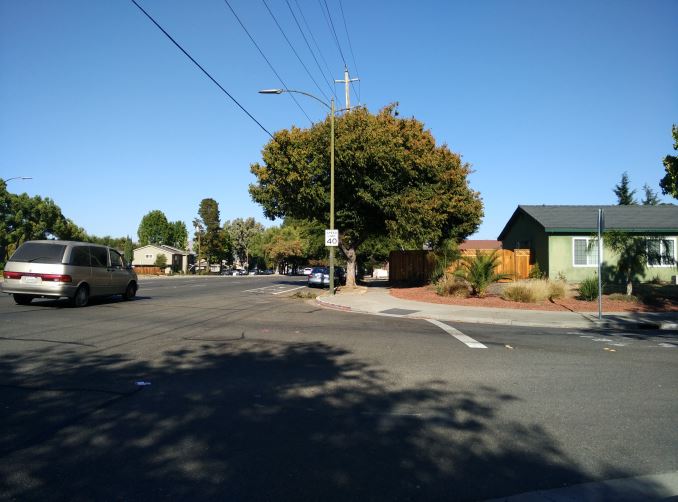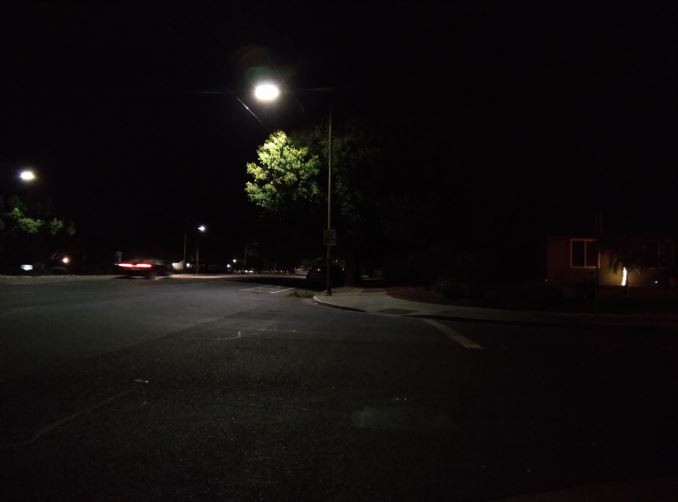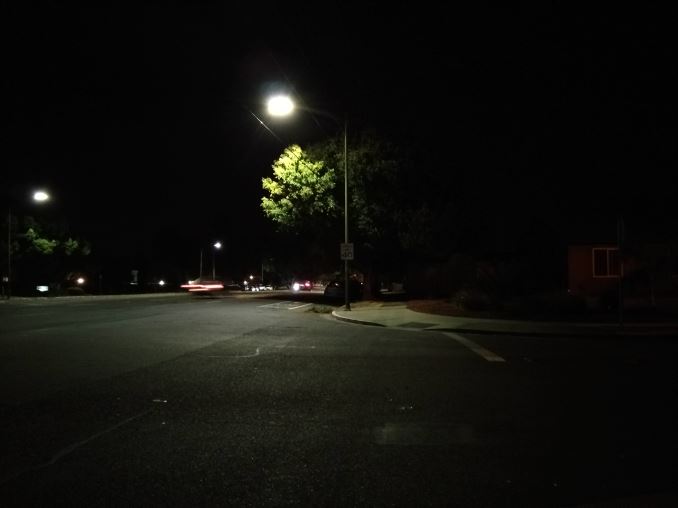The Xiaomi Mi Note Pro and Mi Note Review
by Joshua Ho on September 11, 2015 9:00 AM ESTStill Image Performance
Now that we’ve discussed some of the basic aspects of the camera system in the Xiaomi Mi Note line, we can begin to look at how this all translates to real-world camera performance. In order to do this, we run our standard suite of camera tests which should give a good feel for what camera performance is like when variables such as hand shake and inconsistent camera positioning are removed from the equation.
Xiaomi Mi Note
Xiaomi Mi Note Pro
Our first test is the ISO chart test, which is designed to provide an absolute test of peak spatial detail. This is a controlled lighting test, which should help to reduce potential confounding factors. In the case of the Xiaomi Mi Note line, we can actually see the difference in detail compared to the Galaxy S6 as the Mi Note appears to retain much more detail along the edges of the photo relative to the Galaxy S6 and other smartphones with larger sensors and wider apertures. Detail at the center of the photo is also strongly retained but it seems Xiaomi might be sharpening a bit aggressively as the circle in the center is rather jagged instead of smooth and round. Both horizontal and vertical detail is well retained though, all the way up to the 20 line mark. We can also see some evidence of haloing around the high contrast detail, which is rather distracting and is indicative of strong sharpening effects.
Mi Note
Mi Note Pro
In this basic daytime landscape shot we can see a few potential problems already with the Mi Note camera processing. Although the details are mostly correct, looking at the trees in the distance it's quite obvious that noise suppression is strongly suppressing fine details in order to try and make sure images don't have any noise. The tree in the center of the frame has this strange effect where details inside of the leaves are mostly smudged away but the edges have very high contrast, which creates an odd effect and suggests artificial sharpening. The Mi Note also clearly has far too aggressive noise reduction here as it basically looks like the Mi Note Pro photo but with an AA filter applied. However, for the most part that's all that I have to criticize here. Given that a number of flagship smartphones have shipped with shockingly poor post-processing even in daytime scenes, I'm impressed by how the Mi Note and Mi Note Pro give at least respectable results here.
Mi Note
Mi Note Pro
In low light we really start to see the weaknesses of the Mi Note Pro and Mi Note. Despite the use of OIS, both devices are underexposing significantly and there's just far too much luminance noise reduction going on here. However, once again, that's all the real criticism I have for these phones. Obviously, something like the Galaxy S6 shows far more detail and better exposure in this scene, but there are significant purple hues present in areas that should be black instead of purple, and when looking closely at the Galaxy S6 photo the severe sharpening effects really make it a bit unnatural and gritty. The iPhone 6 Plus is the winner here by virtue of larger pixel size and a lot of software magic to hide the 1/4 second exposure so moving cars appear to be relatively sharp instead of a complete blur, but Xiaomi could easily be in the race for best smartphone camera within a single product cycle of work.
Overall, the Xiaomi Mi Note camera isn't amazing, but it's far from terrible. In daytime situations photo quality is actually already very good, but with some minor post-processing issues that could be resolved with a single OTA update. At night time, with some processing improvements and perhaps higher sensor gain the Mi Note line could start to be compared to the iPhone as well. This doesn't sound all that impressive, but it really is because this is the first phone in this price point where I can even begin to compare the camera to flagship smartphones.


































94 Comments
View All Comments
CrazyBernie - Wednesday, September 16, 2015 - link
Sorry about the late arrival... but perhaps someone could create a region primer article/chart that could then be linked in each phone review? Doesn't really matter to me, since anything international means "Not on Verizon." I do still like reading about new phones though... I've been thinking about branching out from Verizon for a secondary, work related phone.leexgx - Friday, September 25, 2015 - link
i happy that your looking at giving more detailkey parts are is it USA (maybe even Verizon's CDMA network phones are rarer outside the USA), EU or HK/China/Asia phones
as most HK/China/Asia phones Lack band 20 on 4G and lack 3g900 so are useless on vodafone and O2 in the UK and for 4G most parts of the EU and the USA , where as USA phones norm lack 4G compatibility at all in the EU due to odd bands used (i assume by mobile operators to make sure you can only buy a USA phone)
please also list supported 3g/4G bands and their frequencies, in the EU its needs to support Band 20 (800), 3 (1800), band 7 (2600)
in the USA unknown to me (uk me) as seems to be a miss match of bands that are used and thats just for AT&T and T-mobile (for CDMA phone i probably would only buy a subsidized phone if i was on Verizon)
but 4G is a mess (something like 20-30+ 4g bands) compared to 3G and 4G as most EU phones support most networks in the world (quadband phones) even AT&T or t-mobile real 3G network (not fake 4g dc-hspa+ which is 3G)
Archipelago - Saturday, September 12, 2015 - link
You think the only people who read Anandtech are in the U.S.?user_5447 - Friday, September 11, 2015 - link
Wow, OnePlus Two display results look really bad. Plus battery life regressions (S810?).Full review coming soon?
Ian Cutress - Friday, September 11, 2015 - link
Ah, my bad. I was supposed to those data points out and leave them for the its own review. We're doing some analysis on the OPT results and will update in time.darkchazz - Friday, September 11, 2015 - link
They might as well redo the OnePlus One display measurements, because cyanogen has removed François Simond's excellent calibration with an update long ago.It has a very bluish white point now.
smartthanyou - Friday, September 11, 2015 - link
Android 4.4 and 5.0? I think that says all that needs to be said about updates and support.anonymousmonkey54 - Saturday, November 14, 2015 - link
Actually, XiaoMi has been VERY good with updates. They update biweekly IIRC. Since MIUI is a complete overhaul of Android (even more than TouchWiz), they can't jump to the latest version of Android as quickly. They also support MIUI on a variety of phones other than their own, and that takes some of their efforts.i4mt3hwin - Friday, September 11, 2015 - link
Hmm, one plus two on all the chartsBMNify - Friday, September 11, 2015 - link
Thanks for the review Josh, will like to see you review other Xiaomi phones which are incredible value for money like Redmi 2 ($90) and Mi 4 ( $220). These phones are available officially at almost similar pricing in the largest smartphones markets that is China, India, Brazil, Taiwan, Singapore, Malaysia and Philippines.